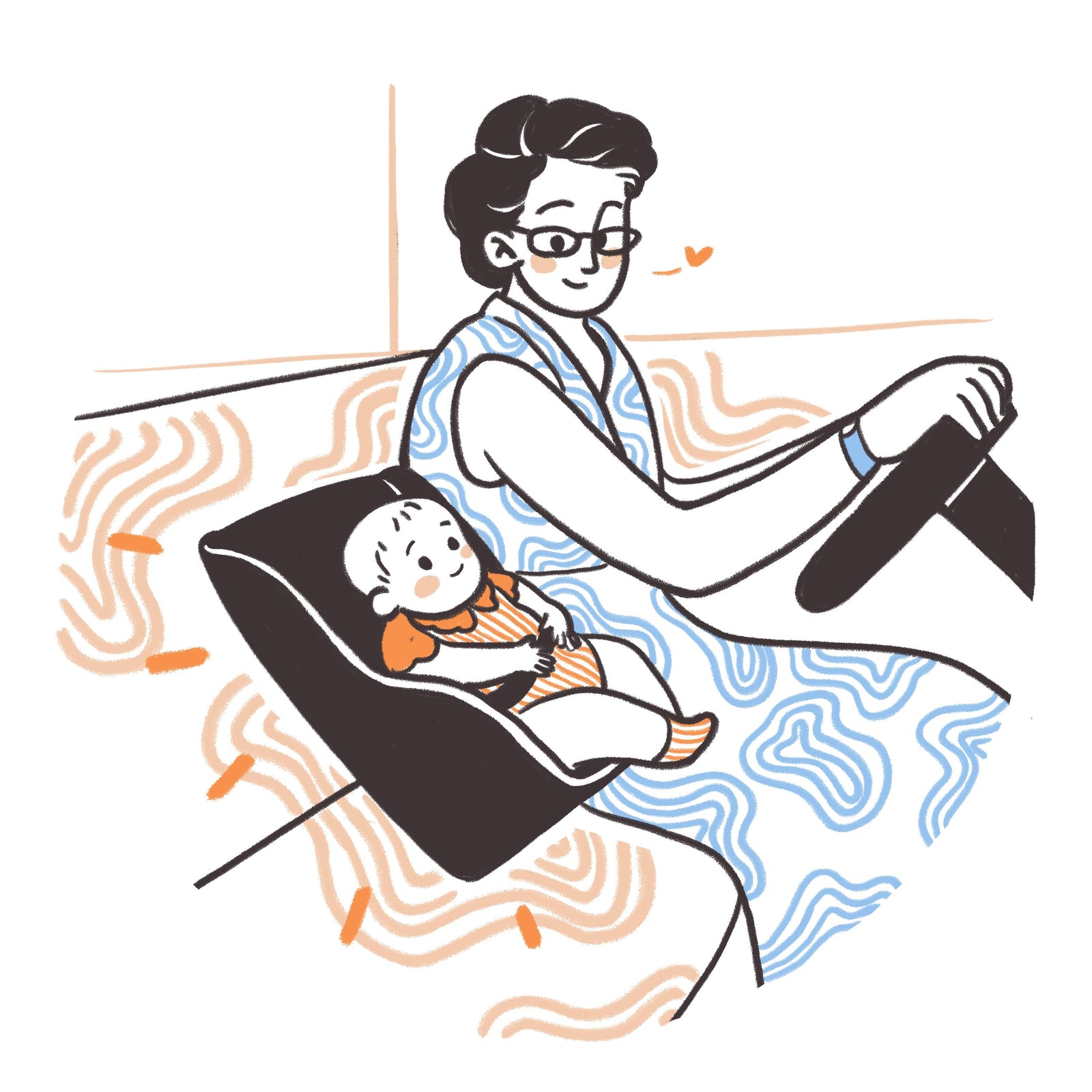Evolution of Baby Car Seats: A Ride Through History

At Loopie, we’re kind of a sucker for interesting facts and tidbits. So, as we dove into designing our Loopie Lap Car Seat, we really wanted to understand the history of baby car seats and their evolution over the decades.
What we discovered was quite fascinating.
Sure, car seats today might be sleek, safe, and smart (yes, we’re looking at you, 360° rotation!). But it wasn’t always this way. So let’s rewind the tape and take a joyride through the history of car seats.
History of Baby Car Seats
1930s-1950s: The Earliest Design Of Infant Car Seats
Back in the 1930s, car seats weren’t built for safety; they were built for height. Designed to boost babies up so parents could see them (and maybe feed them snacks), these early car seats were more like bouncy chairs with a view.
Essentially, it was more about convenience than safety.
1960s: Baby Steps Toward Safety in Car Seats
The 1960s brought a bit of a wake-up call. With car culture booming, so were the risks. It was around this time that the first safety-focused baby car seats began to emerge.
-
1962: British inventor Jean Ames introduced a rear-facing seat with a Y-shaped strap, a move inspired by how astronauts were secured during takeoff. And so the Jeenay Car Seat was born, the first car seat intended for back seat use, and came with a 3-point harness and foam pads.
-
That same year, Leonard Rivkin in the U.S. designed a metal-framed car seat meant to restrain children during collisions.
Still, these early models were not mandatory, and most parents saw them as optional gear, not life-saving essentials.
1970s: Seat Belts Get Serious
As awareness grew around child safety in cars, so did innovation.
-
1971: The National Highway Traffic Safety Administration (NHTSA) set the first federal standards for child car seats in the U.S.
-
These standards focused mainly on securing the seat to the car, not just the child within the car seat.
Manufacturers began creating child car seats with built-in harnesses, while Europe and Australia also moved toward regulation and design improvements. The term “child restraint system” started gaining traction globally.
1980s–1990s: Safety Becomes the Standard
This was the game-changer era. By the 1980s:
-
Car seat laws were introduced in multiple countries.
-
In the U.S., all 50 states eventually passed legislation requiring child car seat use.
-
Crash testing became more common, and so did certification standards like FMVSS 213 (U.S.) and ECE R44 (Europe).
ECE R44 has been revised 3 times since its introduction and is still being used as a standard in many countries globally.
The 90s brought in better padding, adjustable harnesses, and infant seat inserts. The concept of age-appropriate seating, rear-facing, forward-facing, and booster, was becoming mainstream.
2000s–2020s: The Era of Smart Design
With rising awareness among millennial parents, the demand shifted from just safety to safety + comfort + convenience.
Parents wanted ergonomic, easy-to-install, and multifunctional car seats. This era saw:
-
360° rotating car seats for hassle-free loading/unloading
-
ISOFIX/LATCH systems for universal installation
-
Side-impact protection and added cushioning.
-
Lightweight travel systems and convertible car seats.
Designing the Loopie Lap Convertible Car Seat
When we sat down to design the Loopie Lap, we took all those decades of evolution and real-life parenting experiences and packed them into a car seat that grows with your child.
While talking to parents through our design process, a few things became apparent:
-
The car seat should last for a long time
-
It should be really, really comfortable for the child
-
Easy use and installation
-
360-degree rotation is a must-have feature
Furthermore, understanding the evolution of baby car seats helped us appreciate just how much design, safety science, and parental advocacy have shaped what we now consider non-negotiable baby gear.
While India is yet to bring in their own safety standards and regulate the use of car seats, we do now have a generation of parents who are more safety conscious.
So, the next time you hear that satisfying click of your baby’s harness locking in, know this: You’re part of a story that’s been decades in the making.
Frequently Asked Questions for Loopie Lap
Q1 What age group is the Loopie Lap car seat suitable for?
The Loopie LAP is designed to grow with your child. It’s suitable for babies and toddlers from 0 to 12 years (birth up to 36 kg).
Q2 What makes the Loopie LAP car seat safe?
The Loopie Lap is packed with safety-first features like:
-
Side-Impact Protection
-
5 Point-Safety Harness
-
Extra Cushioning & Extended Sides
-
ECE R44/04 certified
Q3 Does the Loopie LAP car seat rotate?
Yes, the 360° rotation feature allows the seat to swivel, so you can easily load or unload your baby from any angle.







Leave a comment